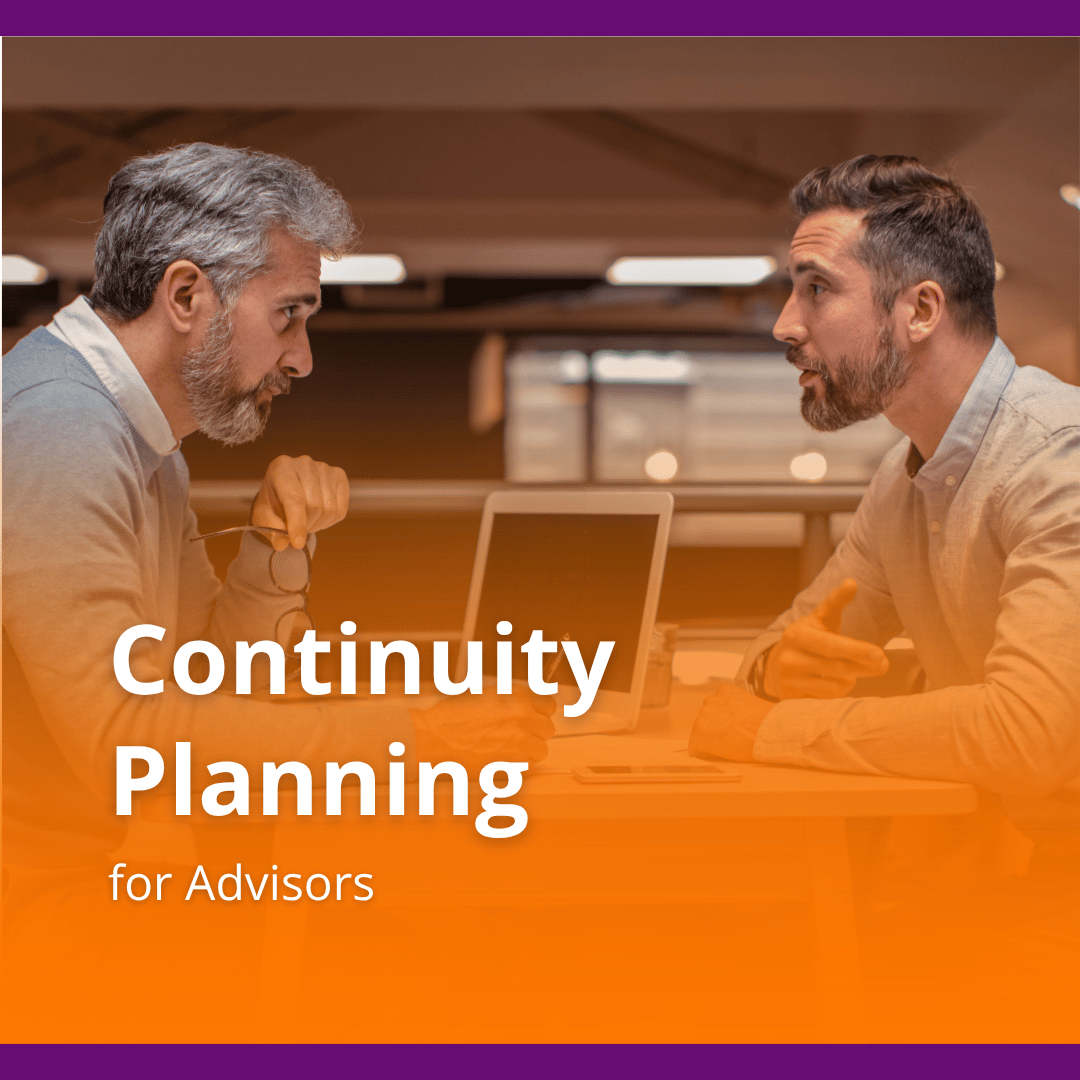Thinking of Selling Your Business? Document Your Operations First
Running a business means knowing every moving part. But to a buyer, that knowledge means nothing if it isn’t documented. And that’s a...
Comprehensive, data-driven valuations and comparative equity analyses to accurately price your practice, establish market benchmarks, and support informed decision-making.
Comprehensive M&A guidance encompassing deal structuring, negotiation strategies, market listings, and transaction closings.
Comprehensive systems, targeted coaching, and in-depth assessments designed to optimize operational efficiency and enhance advisory team effectiveness.
Strengthen continuity through the implementation of formal continuity agreements, the establishment of legal entities, execution of enforceable legal contracts, and securing appropriate capital resources.

In these uncertain times, many advisors are assessing their practices and their ability to withstand the impact unexpected events. While a global pandemic is not a common event, there are other types of events that can and often do happen to a practice–usually with devastating consequences. Which is why it is critical that you take the time to plan for the unexpected and protect your practice in the event of your death or disability. Without a plan, your clients, staff, and family could suffer in the aftermath.
A recent study showed that only 18% of advisors have a succession or continuity plan in place. Considering the fact that advisors spend much of their time helping clients plan for major life changes including death and retirement, this number is startling. At the risk of using a worn phrase, it truly is a case of the cobbler’s children having no shoes. The cost of not having a plan in place is high. The people who will have to pay that cost are your family, your clients, and your staff.

Advisors must plan for their own life events as well as those that we hope never to happen, in order to protect their practice and the people who depend on the practice. The last thing you want is for your family and team members to struggle to make decisions about the practice while grieving. A continuity plan not only relieves the stress on those left behind, it also preserves the equity you built in the business and gives your survivors a roadmap to follow.
A solid continuity plan can also influence the growth of the practice, as it builds trust with clients. Clients want a practice that will continue beyond the life of the advisor, especially when generational planning is involved. Clients also want to know what will happen to their assets when the advisor dies or retires. They want to know that their investments are protected and will remain intact for their heirs. Without a continuity plan in place, clients may be left in limbo or, when left without any direction from your or your team, may take their assets elsewhere before your heirs have time to settle your estate.
A well-developed continuity plan possesses several qualities.
The plan is written.
Your continuity plan should detail what will happen to your practice in the event of your death or disability. This includes but is not limited to how clients will be notified and handled, how a valuation will be secured, and if your practice will pass down to heirs or be sold to a named successor.
It assigns a point person.
Your plan must designate a single point of contact who will coordinate and execute the items outlined in your continuity plan. Often this is someone within the firm who has access to practice systems and team members.
The plan is formally communicated.
It is important that you formally communicate the plan to your family members, staff, and clients. Again, this builds trust and lets key people know what to expect should tragedy strike.
The plan provides access to key documents and information.
It is also important that your continuity plan outline where to locate key documents and information related to the practice. This includes access to past valuations, key contacts, client lists, banking information, vendor and expense contacts, and other important documents.
The plan is updated regularly.
It is also important that you come back and update your continuity plan regularly, especially as your practice evolves and key milestones are met. An outdated continuity plan is almost as bad as no plan. This is especially true if practice value has not been updated or if formula such as a multiple of revenue was used in the plan.
A well written plan includes the following:
In an effort to save money or to get a plan written quickly, may advisors try the DIY approach to developing their continuity plan. Often this means downloading a template online. Many templates provided by a broker-dealers or found on the internet are missing many important elements that may be specific to your practice. They also fail to include sound methods of valuation or to take into consideration many things that make your practice unique.
Most advisors, like most people, don’t want to think about the worst-case scenario. Leaving it to chance can create undue turmoil and hardship for your survivors. Just like you would advise your clients to seek out professional advice, you too should seek out a professional who can help you develop your succession plan. The DIY approach can limit the choices you have for your succession and put your practice at risk.
To help advisors get the professional advice they need at a cost that is manageable, our succession team has developed two turnkey solutions to help you develop a customized continuity plan. The Turnkey Continuity Plan is designed for advisors who have a known buyer/successor and includes a professional valuation that allows you to identify ways to build practice value as well as any issues impacting practice value that you may need to address.

Anthony "Tony" Whitbeck, CFP®, CLU®, is CEO and Owner of Advisor Legacy. He began his career as a financial advisor in 1989 and later shifted to coaching, where he’s guided more than two hundred advisory practices through growth, valuation, and succession. Tony leads Advisor Legacy’s certified third-party valuation engagements and coordinates lending and legal partners to streamline transactions. His articles focus on building transferable enterprise value, mapping internal vs. external exits, and avoiding common succession pitfalls. Drawing on decades of in-the-trenches experience, Tony provides practical, compliance-friendly guidance advisors can use right away.
Receive timely articles, tip sheets, events, and more right in your inbox.

Running a business means knowing every moving part. But to a buyer, that knowledge means nothing if it isn’t documented. And that’s a...

Growing by acquisition is one of the fastest ways to scale — but it’s also one of the easiest ways to stumble. Behind every successful deal is a...

The M&A landscape in financial services isn’t slowing down. It’s evolving. Fast. As of mid-2025, deal values in the sector have surged by...